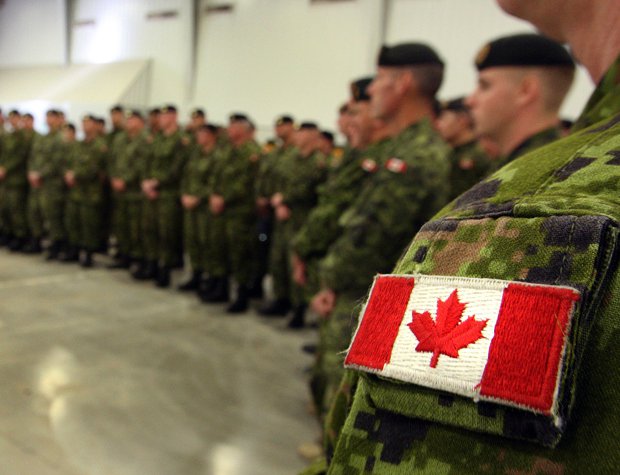For a nation that is inhabited by just over 9 million residents, Sweden has remained remarkably competitive economically. Among the many strategies implemented by the government to ensure its financial competitiveness is the commitment to innovation. Sweden’s Minister for Enterprise Annie Lööf, highlighted this commitment, “Sweden’s innovation capacity is essential to meet the challenges and opportunities of the global economy…that must be maintained and strengthened over time.” So it is only natural that its methodology would cross over into the field of procurement. Unlike Canada which will only be releasing its first Defense Acquisition Guide outlining procurement policies this June, Sweden has refined its procurement process to a fine science. Swedish procurement planners have divided the process into two categories: the internal branch known as the Försvarets materielverk (FMV) or the Swedish Defence Material Administration and the external arm, the Försvarsexportmyndigheten (FXM).
 The FVW is responsible for the supply of materials to the Swedish defence organization. The Canadian equivalent to the FMV is the much broader Ministry of Public Works, which is not only responsible for procurement but other projects like property management and bridges. The FMV was officially established in 1968, but its concept dates back to the early 1600s. In its infancy the mandate of the organization was not only to provide materials for defence purposes, but to do so in a cost-effective and secure manner, which is an objective that is still in effect today. Under this directive, the FMV is primarily focused on invasion defence needs, but gradually pivoted to operations capabilities after the Cold War. To date the Swedish Armed Forces accounts for 90 percent of FMV clientele with other agencies like the coast guard and police force making up the difference.
The FVW is responsible for the supply of materials to the Swedish defence organization. The Canadian equivalent to the FMV is the much broader Ministry of Public Works, which is not only responsible for procurement but other projects like property management and bridges. The FMV was officially established in 1968, but its concept dates back to the early 1600s. In its infancy the mandate of the organization was not only to provide materials for defence purposes, but to do so in a cost-effective and secure manner, which is an objective that is still in effect today. Under this directive, the FMV is primarily focused on invasion defence needs, but gradually pivoted to operations capabilities after the Cold War. To date the Swedish Armed Forces accounts for 90 percent of FMV clientele with other agencies like the coast guard and police force making up the difference.
In addition to serving Swedish defence needs, the FMV is an important player within the cooperation of European nations. The six major defence nations France, Germany, Italy Spain, Sweden and the UK make up a group called Letter of Intent with the objective of restructuring the European defence industry and on a regional level the FMV works with the Nordic Defence Cooperation (NORDEFCO) to ensure exemplary environmental activity.
Where the FMV has surpassed all expectations is the manner in which the organization has financially leveraged Sweden’s small and innovative population with its high military capabilities.
At the opposite end of the FMV is the external branch, Försvarsexportmyndigheten (FXM), or the Swedish Defence and Security Export Agency. It was created in 2010 and has two primary objectives: to represent the Swedish Government in bilateral defence contracts and to promote exports by the Swedish defence industry. At the moment no Canadian equivalent agency exists. The FMV seeks to develop national partnerships with potential customers and emphasizes the need for existing cooperation and trade as a prerequisite to any contract. Any final deal must be approved by the Swedish Agency for Non-Proliferation and Exports Controls, which governs the exportation of all Swedish defence materials.
Where the FMV has surpassed all expectations is the manner in which the organization has financially leveraged Sweden’s small and innovative population with its high military capabilities. This combination has enabled the development of a cost-effective and ultra-completive defence landscape that almost always yields a surplus of goods for sale. Under this structure, Swedish defence companies have been able to thrive and remain competitive among the American and Russian captains of industry.
With the FXM promoting their products to other governments many obstacles that defence contractors routinely encounter have been eliminated. Instead of business development executives from Lockheed Martin or BAE submitting project bids, an extension of the Swedish government is lobbying for SAAB and Dockstsavarvet—a supremely powerful instrument of persuasion when the buyer is trying to decide who to select.
An example of how strong the FXM’s influence must be during contract negotiations was well displayed when Hungary’s government signed a contract extension to use the Gripen fighter jet until 2026. To further emphasize the value of the FXM and the need for Canada to create a similar agency, consider the following statistic. Based on SIPRI’s Arms Industry Database of the top 100 arms-producing and military services companies in the world excluding China in 2012, Sweden’s Saab ranked 32 while the closest Canadian company was CAE at 86.
In its simplicity this model of procurement has not only sufficiently addressed the national defence needs of Sweden but has allowed its private industries to flourish, a symbiotic success that Canada can no longer ignore. Looking beyond our national security, it is the responsibility of the Canadian government to support private industry as best it can. Our defence enterprises stand no chance of survival or progression without better government assistance. Until a spectacular revision of the current model is conducted with viable alternatives, Canadian defence firms will struggle for lucrative market share.




